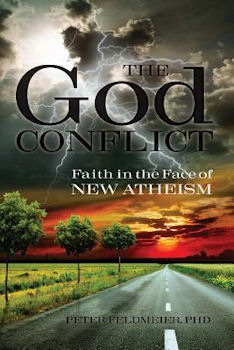
|
Posted February 28, 2014
Book: The God Conflict: Faith in the Face of New Atheism Author: Peter Feldmeier Liguori, Liguori, Missouri. 2013. Pp.160 An Excerpt from the Jacket:
As part of the "new evangelization" efforts of the Catholic Church, The God Conflict offers various perspectives on the Catholic faith and our world today: Perspectives range from those who have left the Church to those who need to reaffirm why they practice Catholicism. If you make yourself available to God, there is evidence galore that he exists. But if your view is focused elsewhere, or if you have trained yourself not to pay attention to God, you may miss the obvious. This book helps you find ways to pay attention and demonstrates why the strategies, mistakes, and biases of the New Atheists and skeptics actually keep us from seeing what is right before our eyes. An excerpt from the book: As a child, the Hasidic Master of Lublin used to go out into the woods. "what are you looking for out there?" his father asked. "I am looking for God." "Isn't God everywhere and isn't God everywhere the same?" "He is," replied the child, "but I am not." The great atheist philosopher Bertrand Russell was once asked what he would say if he died and did discover God, who now wanted to know why Russell hadn't believed in him. Russell's response was, "Not enough evidence, God, not enough evidence." As we have seen, meaning, truth, and goodness point to a transcendent ground, that is, God. Indeed, our very ability to assess such things and our confidence that we can have a modicum of success in doing so points to God as well. We also have to remember that God is nonphysical (incorporeal) and not a member of the universe (transcendent). So, we would not be experiencing God through physical ways of perceiving, and our evidence has to be mindful of this. How does a religious response address this mystery? Pascal writes, "What can be seen on earth indicates neither total absence, nor manifest presence of divinity, but the presence of a hidden God. Everything bears his stamp." This sums up the religious perspective. Table of Contents: 1. Shrill and argumentation 2. Background to new atheism 3. Method under a microscope 4. Sure you want this? Implications of atheism 5. Religion and violence: the big lie 6. Rethinking religion 7. Religious problems: the big-ticket items 8. Proving God Conclusion: Two versions of reality |
|
